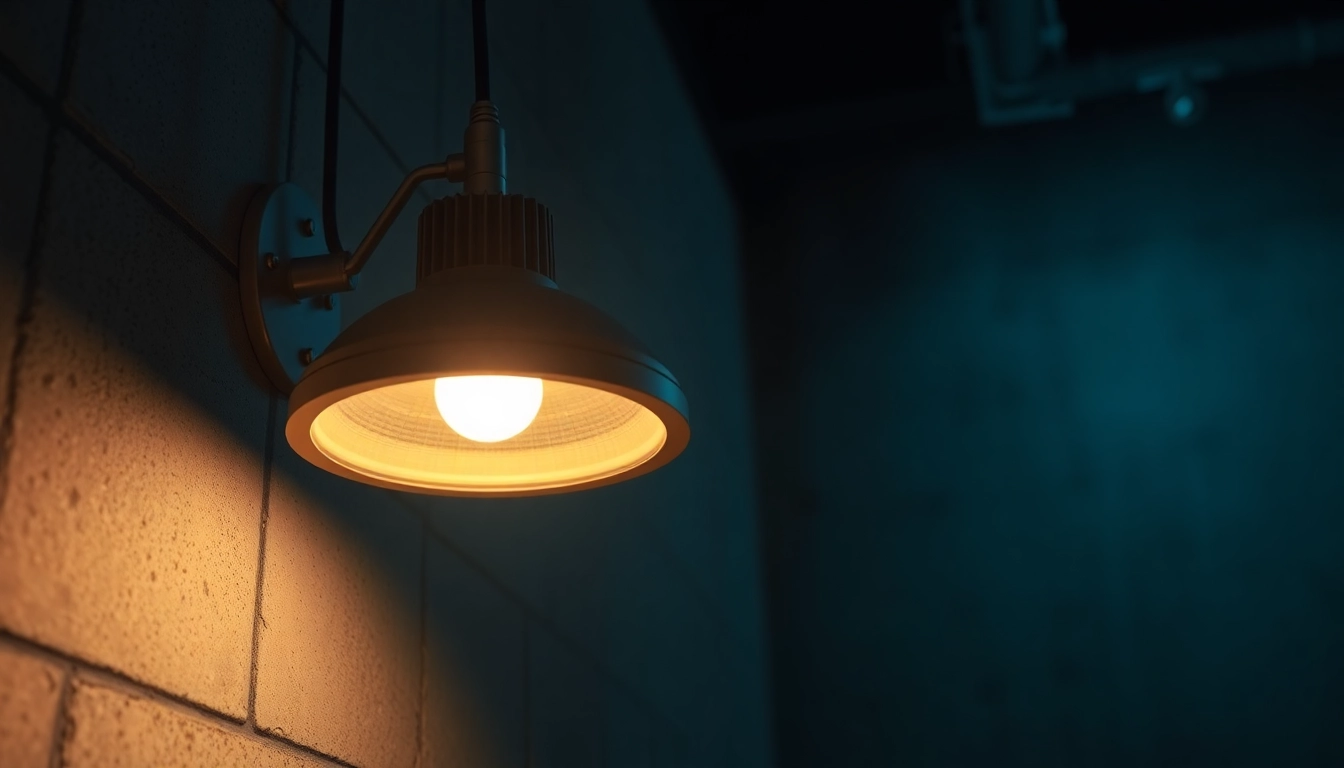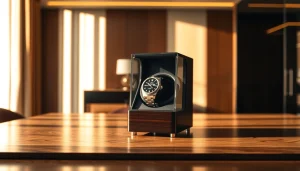Essential Features and Benefits of Vapor Proof Light for Industrial Applications
Understanding Vapor Proof Light
Definition and Purpose
Vapor Proof Lights are specialized lighting fixtures designed to withstand moisture, dust, dirt, and other contaminants that may affect their performance. These fixtures are essential in environments where traditional lighting would fail due to exposure to harsh conditions. For example, a Vapor Proof Light is necessary in industrial settings, food processing facilities, and outdoor locations where exposure to water and dust is common. The engineering behind these fixtures ensures that they not only provide reliable illumination but also maintain safety and efficiency in challenging environments.
Common Applications
Vapor Proof Lights are versatile and can be found in a variety of applications including:
- Industrial Facilities: Factories and warehouses often require lighting that can withstand dust and other environmental elements.
- Food Processing: These lights are crucial in settings where hygiene is a concern since they do not accumulate dirt and can withstand moisture.
- Parks and Outdoor Spaces: In outdoor settings, vapor-proof fixtures provide safety lighting that is also resistant to weather conditions.
- Commercial Kitchens: The ability to handle steam and spills makes vapor-proof lights ideal for kitchens.
- Laboratories: In environments where chemicals may be present, the protective aspects of vapor-proof lights are essential.
Key Features to Consider
When selecting Vapor Proof Lights, several key features should be considered to ensure optimal performance and longevity:
- Ingress Protection (IP) Rating: The IP rating indicates how well a fixture is sealed against dust and moisture. A higher rating suggests greater protection.
- Material Composition: High-quality materials such as polycarbonate or stainless steel provide durability and resistance to corrosion.
- Energy Efficiency: LED options are typically more efficient and have a longer lifespan, reducing the need for frequent replacements.
- Light Output: Assessing the lumen output is essential to ensure the lighting meets the needs of the space.
- Mounting Options: Flexibility in installation can help accommodate unique space requirements.
Benefits of Using Vapor Proof Light
Enhanced Durability
One of the primary benefits of Vapor Proof Lights is their remarkable durability. Built to withstand extreme conditions, these fixtures are designed for longevity. They help mitigate failures that can lead to costly downtimes in industrial and commercial settings. Their resistance to impact and moisture ensures reliable performance, making them an investment in safety and efficiency.
Energy Efficiency
Energy efficiency is a significant advantage of modern Vapor Proof Lights, especially those utilizing LED technology. Compared to traditional lighting options, LED vapor-proof lights consume less energy while delivering superior brightness. This reduction in energy use contributes not only to lower utility bills but also to minimizing environmental impact through decreased carbon footprints.
Safe Operation in Extreme Environments
Safety is paramount in many applications, particularly in environments where flammable materials or chemicals are present. Vapor Proof Lights can operate safely without risk of electrical malfunction due to moisture or dust ingress. This reliable operation underlies compliance with safety regulations across various industries, giving users peace of mind.
Installation Considerations for Vapor Proof Light
Best Practices for Installation
Proper installation is critical to achieving the full benefits of Vapor Proof Lights. Here are some best practices:
- Follow Manufacturer Instructions: Each fixture may have specific requirements; adherence to these instructions is crucial.
- Employ Qualified Electricians: Ensuring installation is performed by trained professionals guarantees compliance with local codes and safety standards.
- Verify Electrical Compatibility: Ensure that existing electrical systems can support the new fixtures, specifically looking at voltage and load requirements.
Placement and Positioning
The placement of Vapor Proof Lights is essential for maximizing their effectiveness. Considerations should include:
- Optimal Height: Install lights at heights that reduce glare and ensure adequate distribution of light across work areas.
- Avoiding Obstructions: Ensure that there are no objects blocking the light output to enhance illumination efficiency.
- Strategic Positioning: In areas prone to moisture, position lights away from high-traffic areas to reduce the likelihood of damage.
Common Mistakes to Avoid
A few pitfalls can undermine the effectiveness of Vapor Proof Lights:
- Ignoring IP Ratings: Selecting fixtures without considering their Ingress Protection ratings may lead to premature failure.
- Improper Sealing: Inadequate sealing can allow moisture and dust to penetrate, negating the benefits of vapor-proofing.
- Overlooking Maintenance: While these fixtures are designed for durability, regular checks and maintenance are still necessary for optimal performance.
Maintenance Tips for Vapor Proof Lights
Routine Checks and Cleaning
Routine maintenance prolongs the lifespan of Vapor Proof Lights and ensures consistent performance:
- Regular Inspections: Conduct visual inspections to check for signs of wear or damage.
- Cleaning: Use non-abrasive materials to clean the fixture surfaces and enhance light output.
- Check Seals: Regularly check seals and connections to ensure there are no leaks or gaps.
Managing Expected Lifespan
The expected lifespan of Vapor Proof Lights can be maximized through proper handling and maintenance. Typical LED fixtures can last up to 50,000 hours. However, factors such as environmental conditions, usage patterns, and maintenance routines can significantly affect this figure.
Upgrading Efficiency
Consider upgrading fixtures to more energy-efficient models, as technology continuously advances. Newer models may offer better lumen output, improved energy efficiency, and longer lifespans. Keeping an eye on the latest innovations in lighting technology can enhance operational effectiveness and reduce costs.
Comparing Vapor Proof Light with Other Lighting Solutions
Vapor Tight Light vs. Vapor Proof Light
Understanding the distinction between Vapor Tight and Vapor Proof Lights is essential for selecting the right fixture for your needs. While both types provide protection against environmental factors, Vapor Proof Lights offer higher levels of protection against pressure and water immersion, making them ideal for more extreme applications. Conversely, Vapor Tight Lights are effective for damp conditions but may not withstand direct exposure to high-pressure water.
Choosing the Right Fixture for Your Needs
When deciding on a lighting fixture, consider the specific requirements of your environment. Factors to consider include:
- Environmental Conditions: Assess humidity, exposure to water, and presence of dust.
- Light Output Needs: Determine the necessary lumens based on the application.
- Energy Efficiency: Review options for energy-efficient models that reduce costs over time.
Industry-Specific Recommendations
Different industries have specific requirements when it comes to lighting. For instance:
- Food Processing: Look for fixtures that are easy to clean and maintain hygiene standards.
- Outdoor Applications: Choose models with robust weatherproofing and durability.
- Manufacturing: Assess options with sufficient illumination for safety and productivity.



